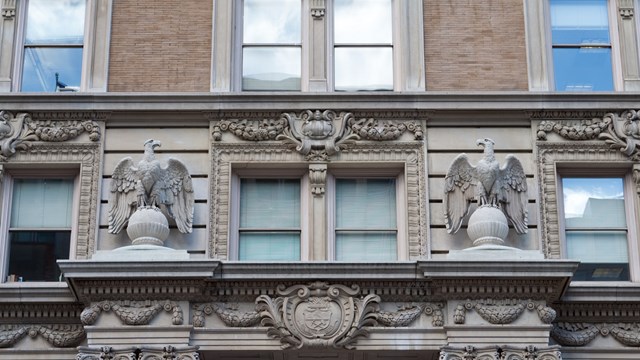
Climate change notwithstanding, the onset of winter in our area generally means more wear-and-tear on buildings than any other time of year. Snow, ice and freezing temperatures can cause costly damage. That's why it's so important to make sure your building's exterior and its various key systems are ready for whatever Mother Nature may throw at them between now and springtime. Here's a quick rundown of a few things supers, managers, and boards should be aware of.
As Above...
Waterproofing and energy conservation converge overhead, on your building’s roof. One of the most common issues affecting flat roofs are ice dams. Ice dams are formed when heat—both from inside the building and from the sun overhead—melts snow on the roof. The melted snow then runs into the much colder gutters and eaves, where it pools and refreezes. The continual freeze-and-thaw cycle creates 'dams' which in turn cause melted water to back up behind them, overrun the sides of the gutter, and seep underneath the shingles or roof membrane. Eventually, moisture can find its way into the building itself, trickling down into ceilings and exterior walls. If and when the ice dam breaks free, it can take shingles and gutters with it and, if the roof stays wet, mildew and mold can flourish, adding even more trouble to an already bad situation.
There are many ways buildings can defend against the damage ice dams can cause -- including having fiberglass insulation installed, ensuring proper venting in the soffits and eaves, and having a qualified roofer install ice dam prevention material on the roof -- but on a day-to-day basis, your super or building maintenance staff should check regularly to make sure that all gutters and downspouts are clean and free of debris at all times. Those connection points between areas of a roof, such as where the roof meets the gutter, or where shingles meet flashing, can turn into problem spots for leaks, if left unchecked for too long.
It's also worthwhile to take a look at the caulking around you building's windows and assess the integrity of the windows themselves. Depending upon the type of caulking used, as well as building conditions and how well the caulking was applied, it could need to be replaced every few years. The only way to really know when that job must be done is to have a qualified professional inspect the caulking -- but residents often can tell when something’s amiss because their units will be drafty.
...So Below
While the roofs are especially vulnerable to wintertime woes, the parts of your building that lie below the surface are just as important. Throughout the winter, pipes and plumbing should be inspected to ensure they are safe from freezing temperatures. Special attention should be paid to pipes that are in unheated spots in basements, or that are exposed to the elements. Exterior plumbing and water sources should all be insulated or turned off before the first freeze, and anything that can retain water (like hoses used to water landscaping elements or clean sidewalks, for example) should be drained and stored away til spring.
Winterization also includes inspecting and prepping your building's boiler -- though really, it's not just a wintertime thing; boilers need to be maintained on a regular basis, not only for proper functioning, but also because the New York City Department of Buildings (DOB) requires boilers to have a certificate of operation. Many boilers need to be overhauled annually, with a combustion test done at that time, and a licensed professional should do regular fireside cleanings and at least biannual checkups of your system. As the boiler’s stack temperature increases, it indicates residue buildup and means it’s time for a cleaning. Boiler pros generally recommend booking a cleaning and inspection of your system to prepare for winter. It’s a day-long job during which gaskets are checked, among other things, and replaced if they're showing signs of wear.
Get On It
Most winterizing steps can and should be done after the summer heat has abated, but before the first snow. Because it can take a few weeks for your building to get worked into a professional's schedule, it's wise for supers and building maintenance staff to do walkthroughs and inspections earlier rather than later, so any issues they discover can be attended to before the snow flies. After a full walk-through and identification of any necessary repairs, it is all about maintenance leading up to and during the winter—going through the building on a weekly basis to make sure nothing has changed or deteriorated.
In addition to structural care, managers and self-managing boards should also make sure they have all the tools and supplies their property will need for the coming cold: sidewalk salt and quality shovels in the winter are snatched up faster than box fans in the summer—so take the time to stock up before you need them! It may also be worthwhile to lay down some long plastic runners or vinyl mats in high-traffic common areas to catch all the snow, salt and grime that gets tracked in during the winter months.
The climate may be heating up -- but for now anyway, winter can still be an icy, slushy grind that exacts a heavy toll on buildings. With some forethought and proper care, your building can avoid the worst of the season's effects.









Leave a Comment